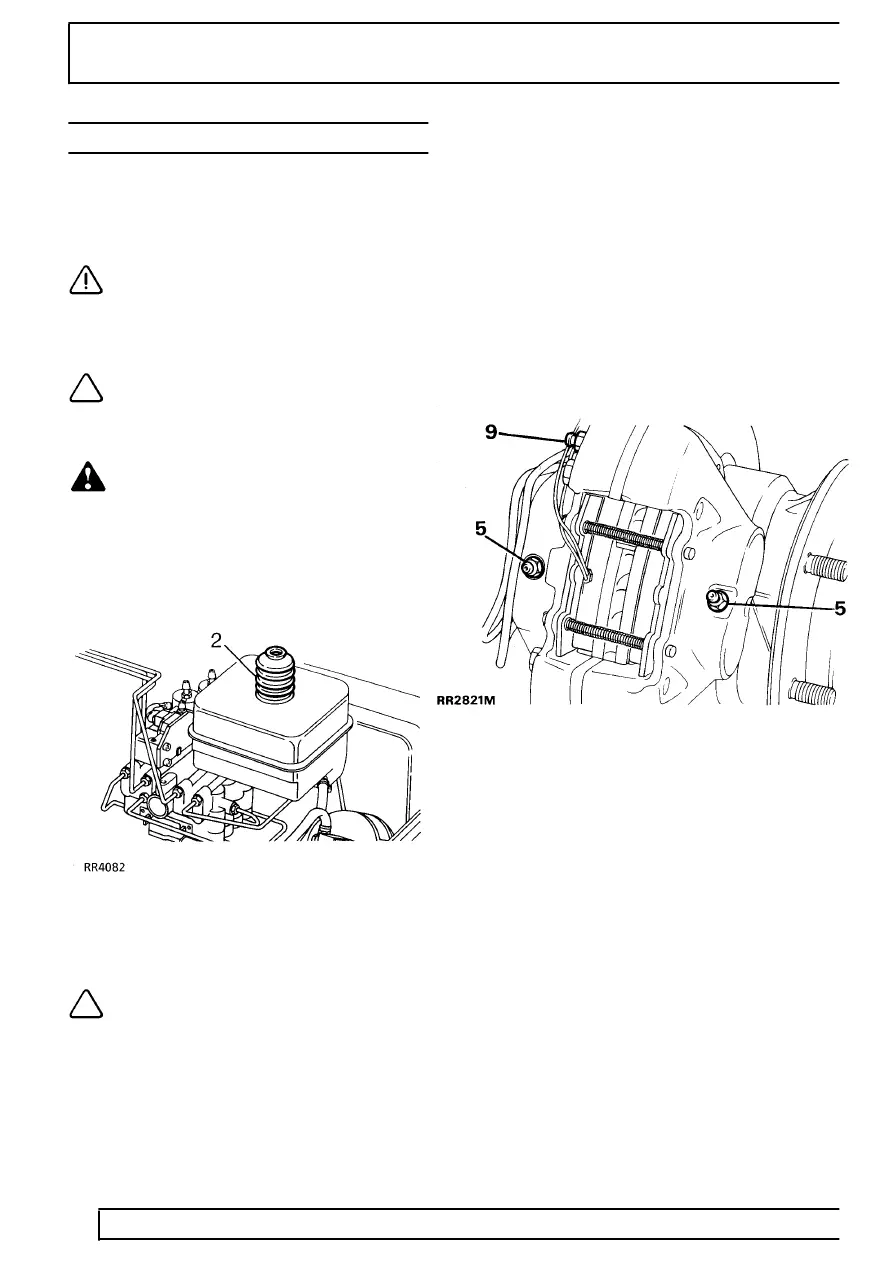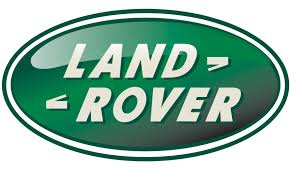Range Rover Classic

70
BRAKES
2
REPAIR
BRAKE SYSTEM BLEED (ABS)
Service repair no - 70.25.02
Equipment: Bleed tube and a clean bottle
containing a small amount of clean liquid.
CAUTION: Clean all bleed screws, filler
cap and connections thoroughly using
clean brake fluid only. DO NOT USE
MINERAL OIL I.E. ENGINE OIL ETC.
MAINTAIN CLEANLINESS THROUGHOUT.
NOTE: Do not allow reservoir fluid level to
fall below ’MIN’ level during bleeding.
Regularly check level and keep topped up
to ’MAX’ level.
WARNING: Do not use previously used
brake fluid. Ensure only new fluid is used,
taken from a clean sealed container.
Carefully dispose of unwanted fluid in a sealed
container, marked USED BRAKE FLUID.
1. Switch off ignition and depressurise system.
Ensure ignition remains OFF until instruction 7.
2. Fill fluid reservoir with specified fluid to ’MAX’
level.
NOTE: Time consumed in filling booster
may be reduced by fitting a rubber bellows
unit to filler neck, using hand pressure to
pressurise the reservoir. A spare bellows unit
from booster push rod is suitable for this purpose.
Ensure bellows unit is perfectly clean to avoid
foreign matter entering system. Raising rear of
vehicle will assist fill procedure.
3. Depress brake pedal slowly and progressively
five times, using full pedal stroke. Release pedal
for five to ten seconds, air bubbles will rise into
reservoir.
4. Repeat instruction 3. until some resistance is
felt. If no resistance is felt check clevis pin is
connected to correct (UPPER) hole in brake
pedal
5. Bleed four front caliper lower (hydrostatic) bleed
screws in the conventional manner.
In the order: outer bleed screw driver’s side,
opposite caliper outer bleed screw, inner bleed
screw, inner bleed screw driver’s side. Depress
brake pedal slowly and progressively, locking
bleed screw at bottom of each stroke.
6. Bleed hydraulic pump - open bleed screw on
pump and allow fluid to flow until clear of air
bubbles. Do not use bleed bottle, use a clean
absorbant cloth to prevent fluid spillage.
